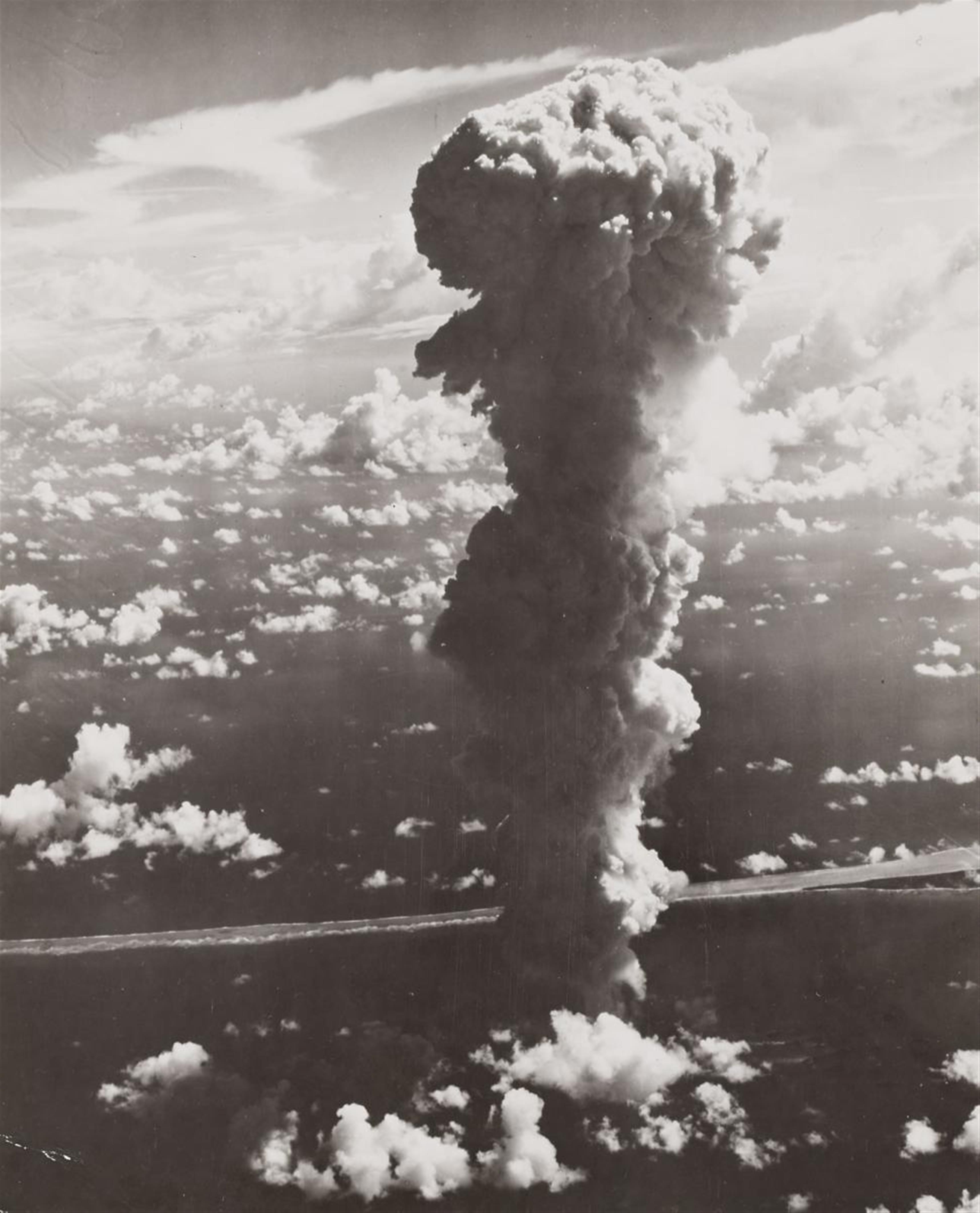Vintage ferrotyped gelatin silver print. 24.1 x 19.2 cm (25.2 x 20.6 cm). 'JOINT ARMY NAVY TASK FORCE ONE PHOTO' stamp and 'UNCLASSIFIED' stamp and numbered in pencil in an unknown hand on the verso. - Slight traces of usage.
“Dramatic seconds in sheer beauty”
In July 1946 the United States of America conducted two nuclear weapon tests on the Bikini Atoll in the Pacific Ocean. These historic tests came to be known as Operation Crossroads and marked the beginning of the Cold War. Two nuclear bombs were detonated within a few weeks. The first device – called Able – was detonated on 1 July at a height of 158 metres above the lagoon of the atoll, and the second one – Baker – followed as an underwater test at a depth of 27 metres on 25 July. The purpose of both tests was to investigate the effects of nuclear explosions for their usability on warships and on military equipment.
The operation stood out, in particular, because it was the first of its kind to be conducted before the eyes of the global public. The US military had invited several hundreds of photographers, cameramen and journalists from all over the world to document the explosions from beginning to end. The Joint Army Task Force One, who were responsible for the operation, conducted a massive PR exercise, partly because the tests were also intended as a demonstration of power towards the Soviet Union. At the same time, the tests were to boost the acceptance of nuclear weapons among the US population.
The media representatives used state-of-the-art photography, including high-speed cameras which recorded the amazingly fast spread of the fireballs within fractions of a second, thus mapping processes which normally elude perception through the human eye. A large number of cameras were installed on the islands of the atoll and on the boats, where they were protected from radiation by sophisticated constructions, while others were installed on aeroplanes and on unmanned drones, so that they could capture the explosions from the air.
“It left me staring open-mouthed. I was so moved I could hardly write intelligible notes,” said Philip Porter, one of the reporters who commented on the view that unfolded before his eyes (quoted by Weisgall 1994, p. 222). The purely aesthetic impact of the explosions totally dwarfed their deadly and destructive force in the public eye – even though the nuclear destruction of Hiroshima and Nagasaki had occurred only 12 months earlier and although considerable concerns were being expressed by both diplomats and scientists. The purely visual impact of the gigantic nuclear mushrooms shooting up into the sky was described by the US government historian William S. Shurcliff as “dramatic seconds in sheer beauty”. There can be no doubt about the visual appeal of these shapes which were open to so many visual associations. The photographs of the nuclear explosions, which were as terrifying as they were fascinating, are among the key images of the 20th century which – despite or indeed because of their ambivalence – eventually also found their way into fine arts and popular culture (e.g. Andy Warhol, Roy Lichtenstein and Stanley Kubrick).
The photographs auctioned here, which were compiled by a German private collector over a period of many years, had often been published in the daily press at the time and had found their way into the two books by William S. Shurcliff (see below). They are among the best-known photographs of Operation Crossroads.
Literature
William S. Shurcliff, Operation Crossroads – The Official Pictorial Record, New York 1946
William S. Shurcliff, Bombs at Bikini – The Official Report of Operation Crossroads, New York 1947
Jonathan Weisgall, Operation Crossroads: The Atomic Test at Bikini Atoll, Annapolis 1994

